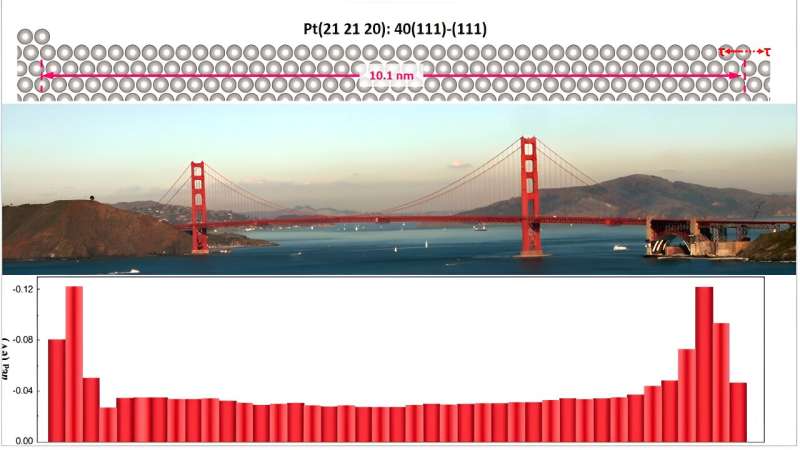This article has been reviewed according to Science X's editorial process and policies. Editors have highlighted the following attributes while ensuring the content's credibility:
fact-checked
trusted source
proofread
Researchers create a paradigm shift in catalyst active site categorization, opening doors to new catalyst design

In collaboration with researchers in the United States, China, and the Netherlands, Davidson School of Chemical Engineering's Dr. Zhenhua Zeng and Professor Jeffrey Greeley, have advanced catalysis research and catalyst design through their exploration of active sites.
Their findings not only offer valuable perspectives on prior catalytic reactivity and active site studies but also forecast the development of new catalysts with notably enhanced performance.
The usage of heterogeneous catalysts in chemical reactions is widespread, with the understanding that high catalytic activity occurs only on specific surface sites. "Determination of the molecular structure of catalytic active sites is a central and longstanding goal of catalysis science. Current research identifies and classifies these active sites through distinct surface motifs, such as steps and terraces.
"This categorization often oversimplifies the complexity of active site identification, which can lead to uncertain classification of active sites and incorrect predictions of catalytic activity. Thus, this misidentification hinders opportunities for catalyst design," stated Professor Greeley.
Published in Nature, the article "Site-specific reactivity of stepped Pt surfaces driven by stress release" reveals a solution for the oversimplified categorization: atomic site-specific reactivity driven by surface stress release, which was often overlooked in the current classification process.
"This study demonstrates the existence of a fundamentally new class of active sites, composed of diverse surface structures coupled by extended stress and strain fields in the catalyst surface, that may lead to exciting new catalysts for fuel cells and related electrochemical devices," said Greeley.
Using stepped Pt(111) surfaces and the oxygen reduction reaction (ORR) in fuel cells as examples, the paper shows that surface stress release produces inhomogeneous strain fields, leading to distinct electronic structures and reactivity for terrace atoms with identical local coordination.
Furthermore, the terrace atoms surrounding the steps can experience up to 50 times enhancement higher than the atoms in the center of the terrace causing some areas of the terrace to experience higher or lower ORR activity. Researchers concluded that the ability to control ORR reactivity through altering terrace widths or regulating external stress opens new doors for catalyst design.
"Our work challenges the conventional assumption of uniform reactivity among atomic sites with identical local environments, revealing distinct reactivity induced by even minor imperfections," stated Zeng.
"This paper provides atomic-scale insights into active sites of stepped Pt surfaces, particularly focusing on their role in hydrogen fuel cells. This fundamental understanding not only provides compelling insights into previous experiments but also predicts new catalysts with significantly improved performance."
The findings generated by this research allow for a new lens through which researchers view catalytically active atomic sites and the principles governing the design of heterogeneous catalysts.
Collaborator, Professor Marc Koper of Leiden University stated, "This work is a beautiful example of how a dedicated collaboration between high-quality computations and experiments can bring unique insight into a long-standing issue in surface electrocatalysis, namely how and if local surface strain can influence chemical reactivity. I am delighted to have been part of this collaborative effort."
More information: Guangdong Liu et al, Site-specific reactivity of stepped Pt surfaces driven by stress release, Nature (2024). DOI: 10.1038/s41586-024-07090-z
Provided by Purdue University





















